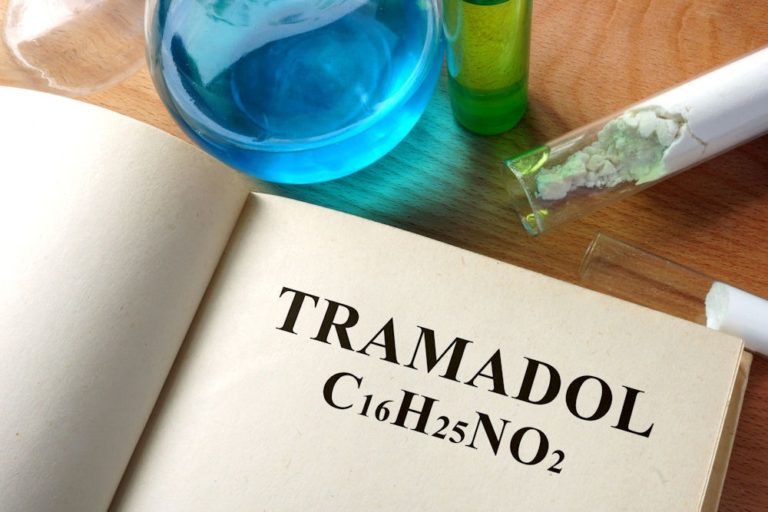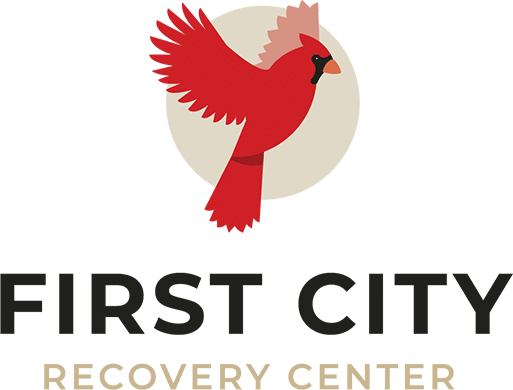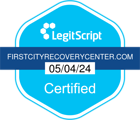Tramadol Detox in Kokomo, Indiana
Addiction has a way of presenting itself as a drug and alcohol disease, but it’s far more complicated than that. Many people come from different backgrounds with different experiences. People often have no intention of becoming addicted. They could be taking painkillers after a major surgery, or they could be drinking to cope with some sort of trauma. The same is true for those who are addicted to tramadol. Our drug detox in Kokomo, Indiana offers specific treatments for various substances.
Table of Contents
ToggleWhat is Tramadol?
Tramadol is a synthetic opioid medication used to treat moderate to moderately severe pain. It works by blocking the transmission of pain signals in the brain, helping to reduce discomfort and improve quality of life. Tramadol is usually prescribed as an oral tablet or extended-release capsule and can be taken with food or without it. It is important to remember that tramadol is a powerful prescription medication and can be habit-forming, so its use is usually limited to a doctor’s prescription. Common side effects of tramadol can include nausea, dizziness, constipation, and headache.

What is Tramadol Withdrawal?
Tramadol withdrawal is a set of physical and psychological symptoms that can occur when an individual suddenly stops taking a medication containing tramadol. Tramadol is an opioid medication primarily used to treat moderate to severe pain, including chronic pain. It works by altering the way the body perceives pain signals in the brain and decreases activity in the brain and nervous system.
Common tramadol withdrawal symptoms include nausea, vomiting, stomach cramps, sweating, shakiness, restlessness, insomnia, anxiety and depression. These symptoms can range from mild to severe and may last for up to a week or longer. In some cases, the symptoms of withdrawal may be more intense and last for several weeks or longer.
It is important to remember that the effects of tramadol withdrawal can be very difficult and even dangerous. Because it can cause physical and psychological dependence, sudden discontinuation of tramadol may lead to serious health risks. This is why it’s imperative to have a doctor’s oversight while taking tramadol.
How Does Tramadol Withdrawal Differ from Other Opioid Withdrawal?
Drug withdrawal is a common symptom experienced by those who are dependent on or addicted to certain substances. Tramadol withdrawal, in particular, can be more complex and difficult than other types of drug withdrawals due to the way it interacts with the brain’s opioid receptors. Unlike other drugs such as alcohol, benzodiazepines, and opioids that affect the brain directly, tramadol affects the serotonin and norepinephrine levels in the brain.
When it comes to withdrawal from tramadol, symptoms can range from mild to severe and may include anxiety, insomnia, nausea, vomiting, sweating, muscle aches, headaches, mood swings, fatigue and even seizures. In addition to physical symptoms, individuals may also experience psychological issues such as depression, irritability and difficulty concentrating.
The severity of tramadol withdrawal depends on how long the drug was used and in what quantity. The longer a person has been taking it and the higher the dosage, the more intense their withdrawal symptoms will be. Furthermore, if an individual has a history of addiction or mental health issues, they may be more prone to experiencing more intense withdrawal.
Managing Tramadol Withdrawal
The best way to manage tramadol withdrawal is with medical supervision and a tapering schedule. Tapering involves gradually reducing the dosage of the drug over time until there is no longer any dependence on it. This allows the body to adjust slowly to the reduced amount of the drug, minimizing withdrawal symptoms.
What is Tapering?
Tapering off drugs involves gradually reducing the dose of a drug over a period of time. This is often done when a person wants to stop taking a medication that they have been taking for some time. Tapering off allows them to slowly reduce the amount of medicine in their system, which can help minimize side effects or withdrawal symptoms.
Tapering off can also help to reduce the risk of relapse and make it easier for someone to be successful in their recovery. It is important to note that tapering off drugs should only be done under the supervision of a doctor or treatment facility, as improper tapering or abrupt cessation can lead to serious health complications. Depending on the type of drug and its strength, tapering off can take anywhere from several days to months.
A doctor may also suggest medications that can help with withdrawal symptoms or prescribe supplements to replenish the body’s nutrients during the tapering process. Tapering is not just beneficial for reducing side effects and relapse, but it can also help a person in their overall recovery journey. Gradually decreasing the use of drugs can help to restore balance in the body and mind, providing a smoother transition into sobriety.
It’s important to be patient throughout the tapering process and to understand that it may take some time to achieve successful results. With determination and support, anyone is capable of making a positive change in their life.
How Do You Taper from Tramadol?
When tapering from tramadol, it is important to be gradual and consistent. Tapering should start by reducing the dosage of tramadol gradually, usually over a period of several weeks. It is important to talk to your doctor for guidance on how to safely taper off this medication. A doctor or treatment supervisor can provide you with specific advice based on your individual history, current needs and medical condition.
It is important to take the same dose each day when tapering from tramadol and not to skip doses. Doing so could lead to withdrawal symptoms and increase the difficulty of the taper process. When reducing the dosage of tramadol, it is important to space out the reduction intervals. For example, if reducing the dosage by 50 mg every two weeks, reduce it by 25 mg every week instead for a more gradual decrease.
It is also important to keep in mind that when tapering off tramadol, you may experience some withdrawal symptoms such as nausea, headache, sweating, and dizziness. These symptoms can be managed by drinking plenty of fluids, getting adequate rest, and eating a healthy diet to help the body cope with withdrawal. It is also important to remember that withdrawal symptoms can vary in intensity from person to person and may require medical intervention if they become severe.
Is There Treatment for Tramadol Addiction?
 There is tramadol addiction treatment available. Treatment for tramadol addiction typically involves a combination of medications and behavioral therapies to help people stop using the drug and manage their symptoms. Medications may be prescribed to reduce withdrawal symptoms or cravings, while behavioral therapies such as cognitive-behavioral therapy (CBT) can help individuals learn healthier coping skills and identify triggers that lead to drug use.
There is tramadol addiction treatment available. Treatment for tramadol addiction typically involves a combination of medications and behavioral therapies to help people stop using the drug and manage their symptoms. Medications may be prescribed to reduce withdrawal symptoms or cravings, while behavioral therapies such as cognitive-behavioral therapy (CBT) can help individuals learn healthier coping skills and identify triggers that lead to drug use.
In some cases, residential treatment programs may be recommended if an addiction is more severe or the individual needs a higher level of care. It is important to remember that recovery from tramadol addiction requires ongoing effort and support and can take time; at First City Recovery Center in Kokomo, Indiana, individuals can find success in their journey toward sobriety.
What is Residential Treatment for Tramadol Addiction?
Residential treatment for tramadol addiction is an intensive form of care that provides individuals with around-the-clock support and supervision as they work to overcome their drug problem. Residential treatment centers often use therapies such as cognitive-behavioral therapy, 12-step facilitation, family therapy, art therapy, music therapy and recreation activities.
As part of their treatment program, individuals may also receive medical care and medication-assisted therapy to manage symptoms associated with tramadol withdrawal. Residential treatment at First City Recovery Center in Kokomo, Indiana typically lasts anywhere from 30 days up to a few months. This is all dependent on the needs of the individual.
What is Cognitive Behavioral Therapy for Tramadol Addiction?
Cognitive Behavioral Therapy (CBT) is an evidence-based psychotherapy approach that has been shown to be effective for treating tramadol addiction. CBT focuses on helping individuals identify and change patterns of thought and behavior that are associated with their substance use. By recognizing the underlying beliefs, emotions, and behaviors that maintain their addiction, and then developing strategies to challenge and modify them, individuals can learn healthier ways of coping with their cravings and increase their chances of recovery.
What is Detox for Tramadol Addiction?
Detox for tramadol addiction is a process that helps to physically and psychologically adjust the body to become free of tramadol dependence. This process can be done in an inpatient or outpatient setting, depending on the severity of the addiction. During detox, individuals will experience withdrawal symptoms as their bodies try to readjust to functioning without the drug.
To reduce the intensity of these symptoms and make the process more tolerable, medical professionals may provide medications to manage cravings, mood swings and other physical side effects. Additionally, therapists and counselors can also support patients in developing healthier coping strategies for managing stressors in their daily lives that may have contributed to the addiction in the first place.
Get Back on Track Today
Tramadol addiction isn’t the end of your story; you are more than an addiction. At First City Recovery Center in Kokomo, Indiana, we prioritize individualized treatment. We want to ensure that those who walk through our facility doors get the utmost in addiction rehab. If you or a loved one would like to find out more, you can contact us here.

MD, Psychiatrist
Dr. Vahid Osman, MD is a psychiatry specialist in Indianapolis, IN.
Dr. Osman completed a residency at Austin State Hospital. He has over 32 years of experience in Psychiatry & Behavioral Health. He is board certified by the American Board of Psychiatry and Neurology.




